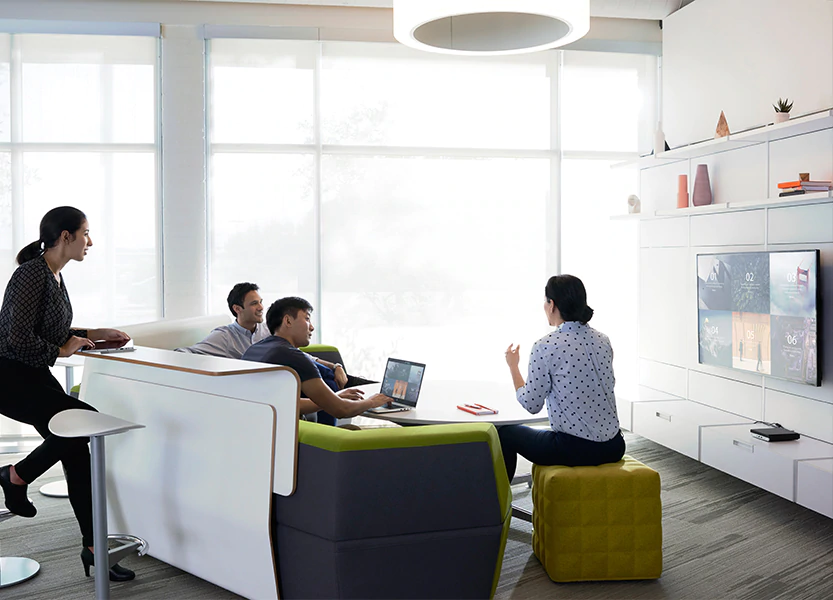There is tremendous power – as more and more businesses are coming to understand – in skillfully applying the methods of insight and research associated with Design Thinking to one's challenges.
These methods – commonly known as Design Methods – allow teams to explore, question, analyze, and study all manner of important considerations around both the problem space they're working on, and the solution space they must solve for.
Whether a Consumer Insights Team, a Design Team, an Engineering Team, a Product Development Team, or a fully cross-functional Innovation Team, these teams benefit greatly from applying these methods to their challenge. Indeed, these methods allow the team to collaboratively do the following:
Beyond this, however, one of the most important things that properly-applied Design Methods do for a team is they allow the team to develop a shared understanding of the situation involved, so that they achieve coherence in their Point of View and in their Design Principles, as well as a shared understanding of the efficacy of each solution being proposed. Few methods allow teams to reach this same level of coherence as do Design Methods, proving their merit in helping teams to come together with high-confidence around their insights and in the directions they are taking.
Legacy Innovation Group – via its Design Methods Workshop – skillfully leads teams in using and applying one or more specific Design Methods to address a specific challenge stage in their innovation journey. Whether the team is divergently exploring their problem space to amass as many new insights as possible, convergently testing hypotheses in their problem space to reach a correct Point of View, divergently exploring their solution space to conceive as many impactful new solution concepts as possible, or convergently testing potential solution concepts in their solution space to find the most optimal one, we have the knowledge, skill, and expertise to guide the team in applying any appropriate Design Method to the task at hand. We know, and have used, highly effective Design Methods for each of these phases. Therefore, for any given situation, we know which Design Method will be most effective for producing the desired outcome, and how to lead the team in using that method most appropriately.
Our Design Methods Workshops are highly engaging and, at times, quite deep, as we dive headlong into using a particular method to explore and study a certain aspect of the team's challenge. We typically structure the workshop into three primary phases. In Phase 1, we explain the method to the team and how it works, and thus how we will be using it. In Phase 2, we walk the team through using the method to explore and study the issues of concern. And in Phase 3, we work to converge within the method and thus harvest out of it the outcomes we had set out to produce in the beginning. This results in the team walking away with the insights and understanding they had set out to develop in this workshop.
Legacy Innovation Group clusters the Design Methods into four distinct categories (all of which represent various forms of Business Ethnography):
Each of these is focused on developing a specific type of insight about the subject of interest, and thus a different type of outcome.
Many of the Design Methods we use are co-creative in nature, meaning we bring the test subjects into the process and have them do something creative for the team, such as answer questions, draw diagrams, sketch images, build collages, sort cards, record themselves, and so on. Known as Immersive User Research, these allow the team to see and hear – directly from subjects – tangible evidence of their thought processes, thereby allowing the team to probe deeper into those processes so as to better understand the cognitive and emotional reasonings going on behind them.
Some of the Observe Methods we commonly lead teams in using include: Absence Thinking, Fly On the Wall, Still Photo Survey, Behavioral Archeology, Spatial Behavior Mapping, Contextual Inquiry (Shadowing, or Rapid Ethnography), Guided Tours, Workarounds, Customer Innovations, and more. Most of these require us to go out and do fieldwork together.
Some of the Question Methods we commonly lead teams in using include: Five Whys, Question Laddering, Why-How Laddering, Contextual Interviews, Behavioral Interviews, Empathy Interviews (aka In-depth Interviews), Focus Groups, Unfocus Groups, Narration, Behavior Sampling, Extreme User Interviews, Personal Inventory, Journal/Diary Study, Camera/Video Journal Study, Draw the Experience, Collaborative Sketching, Conceptual Landscapes, Collaborative Mind-Mapping (Cognitive Maps), Card Sort, Free Listing, Word Concept Association, Collage, Participatory Co-Creation (Design), Opportunity Workshops, and more. Some of these require us to go out and do fieldwork together.
Some of the Experiment Methods we commonly lead teams in using include: Empathy Tools, User Scenarios, Role Playing (aka Informance, or Be Your Customer), Bodystorming, User Testing, Cafe Testing, Usability Testing, Scenario Testing, Try It Yourself, and more.
Some of the Study Methods we commonly lead teams in using include: Rapid Facilitation, Beginner's Mindset, Activity Analysis, Persona, Empathy Map, Storyboarding, Cognitive Task Analysis, Analogous Empathy, Barrier & Trend Mapping, Metaphor Mapping, Saturate & Group, Story Share & Capture, Point of View Madlibs, Point of View Want Ads, Critical Reading Checklist, Process Flow Analysis, Swim Lanes, CX Journey Mapping, Concept Models, Anthropometric Analysis, Competitive Product Survey, Error Analysis, Ecosystem Visualization, Stakeholder Analysis, Value Webs, 2x2 Matrices, Indirect Benchmarks, What?How?Why?, Powers of Ten, Backcasting, Six Thinking Hats, Historical Analysis, Era Maps, Brainwriting, Brainstorming, Piggybacking, How Might We Questions, Constraint Imposition, Collaborative Sketchboards, Affinity Analysis, Scenario Planning, Long-Range Forecasts, Tangible Futures, Brandcasting (aka Brand Swap), Design The Box, Concept Videos, Collaborative Inspection, I Like / I Wish / What If, Feedback Capture Grid, Alignment Model, and more.
As can be seen, there is a vast arsenal of Design Methods we can call upon to help teams achieve the types of insights they seek. In each and every case, we will recommend only those methods that fit well with the need at hand, considering the specific types of insights the team wishes to develop. Since much of this work is often focused on understanding the need space around a particular product, service, or experience, we tend to draw most heavily from those methods that let us explicitly explore this space.
When finished in the Design Methods Workshop, your team will walk away with the insights and "a-has" it had sought, including a shared understanding of these, and what the team is to do with them next.
Each Design Methods Workshop is typically staged as a 1 – 3 day event, and can be held anywhere that is amenable to the objectives being pursued.
In leading teams in the use of Design Methods, what we are specifically trying to help them understand are actually several different things about their situation of concern.
First of all, we need the team to understand what outcomes their subjects are trying to achieve in this situation, and why they wish to achieve those particular outcomes... what their underlying motivations are... their needs, desires, expectations, and preferences, and even more deeply... their core beliefs, values, and concerns that shape these motivations.
Secondly, we need the team to understand how their subjects interact with, and respond to, any product, service, or experience involved... what external stimuli they encounter, what their internal perceptions of these stimuli are, and then what behaviors and attitudes they manifest as a result of this, including, in these situations, the cognitive and physical actions they take, and the cognitive, emotional, and physical reactions they have.
Finally, going back to the product, service, or experience involved, we want the team to learn what "jobs" their subjects expect to complete on their way to achieving their intended outcomes, and why they expect to complete those particular jobs.
When all is said and done, this produces within the team an empathic understanding of the subject and their situation. That in turn allows the team to take a Human-Centered Design approach to whatever solutions they ultimately conceive.
As is perhaps evident from this list of insights we seek, Design Methods – by their very nature – borrow heavily from the fields of psychology, sociology, and anthropology. As such, they try to understand subjects' perceptions, emotions, and behaviors in a particular situation, with the goal in each case of uncovering hidden insights about their needs, motivations, and decision processes in that situation. To do this, Design Methods study – amongst other things – subjects' sensory perceptions, emotional triggers, and behaviors – including any compensatory behaviors they exhibit, which often points to shortcomings in current solutions.
One thing we often observe in this process is that what subjects say they do, and what they actually do, are each quite different from one another. When confronted with this reality (using proof such as a video recording), subjects are often quite surprised by their own dissonance. This tends to reveal subconscious biases and other hidden influencers at work, further helping the team to pursue a Human-Centered Design and with it, solutions that optimally resonate with their customers' real needs.
The Design Methods Workshop Engagement typically follows these steps:

CEOs come and CEOs go. Some are excellent. They generally ‘get it’. Others not so much. They really ‘don't get it’. What makes the difference between these?
READ MORE
There's an insidious debate that's bounced around for probably the better part of twenty years now. It's the debate of whether or not ‘innovation is everyone's job’...
READ MORE
Innovation Spaces – which can refer to any space intentionally designed to foster and facilitate good innovation work – come in all sorts, shapes, and sizes...
READ MOREWe partner with committed business leaders to make their organizations the driving forces in their markets.
CONTACT USSign up for our newsletter.
NEWSLETTER SIGN-UP